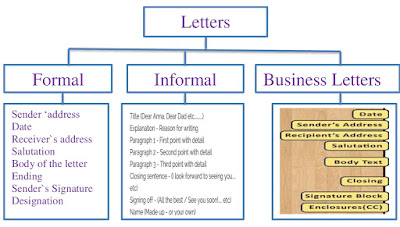Lesson Planning of Formal, Informal, and Business Letter Writing Subject English Grade 9th
Lesson Planning of Formal, Informal, and Business
Letter Writing
Subject English
Grade 9th
Students` Learning Outcomes
- Analyze and compare various informal and formal letters to find out the differences of tradition, vocabulary, style, layout, salutation and style etc.
- Follow the rules of the official letter regarding.
- Recognize and demonstrate appropriate use of vocabulary, style and style in formal letters.
- Write the address clearly and accurately on the envelope.
- Write formal letters to people in close and wide social and academic circles for a variety of purposes.
Information for Teachers
- Before the advent of modern technology made communication so easy, the art of letter writing was seen as an essential requirement. Even today the letter is an important communication tool both in our work and personal lives. So let’s educate ourselves about the nuances of letter writing.
- Just like story writing, some points should also keep in mind while writing a letter. A letter comprises of six sections and a good letter appears only if these six sections are written correctly.
- Letters may be divided into the following classes, as; Kinds of letters:
- Informal letter/ Social / Private or Personal letters: these letters are written to friends, family members and people that we know well, as; a letter to an old school friend or a letter to father/mother/brother/sister, etc.
- Formal /Official letters (Applications): These letters follow a certain pattern and formality. They are strictly kept professional in nature, and directly address the issues concerned. These letters are written to people that we don`t know well, as; a letter to the local council to inquire about childcare facilities, etc.
- Commercial or Business Letter: This letter is written among business correspondents, generally contains commercial information such as quotations, orders, complaints, claims, letters for collections etc.
- Letter in response to advertisement:
- Circular letter or notice and draft:
Parts of the letters:
Heading:
- Addressee`s address and date is included in
this section. In the examination paper it is written at the top right corner
like this:
Examination Hall,
City A.B.C,
April 30, 2021
Or 30th April,
2021
- There are two ways to mention date, so adopt anyone of them, as; April 30, 2021 or 30th April, 2021
Salutations:
- This section comprises of those words, which are used for addressee as; ‘My dear Father / My dear friend’.
Body:
- This is the most important section of a letter, which narrates the purpose of letter writing. This section should be precise.
Conclusion:
- This section is mentioned at the bottom left corner of paper. Here, words are used according to the association with addressee. It has different forms, as;
- Yours affectionately or your affectionate……
- If you have blood relation with addressee then you should write, as;
- Your affectionate father,
- Your loving……
- Yours sincerely,
- Yours faithfully
- Writer`s name: then writer mentions his/her name at the left bottom, as;
Your loving son,
Farhan Iqbal
Address:
- At the end of addressee`s address is written on the envelope. His/her name in the first line, house number & street number with the name of road or village in the second line and the name of city is written in the third line, as;
Mr. Ali Shear,
House number A-415
Street no. 2, Medina Town,
Bahawalpur.
Material / Resources
Writing board, chalk/marker, duster,
notebooks
Introduction
- Elicit the difference between the formal, informal, and business letters formats.
- List characteristics of formal, informal, and business letters on the board;
- Discuss with the students the following questions question:
- What is the formal letter? (Expected answer would be as; a formal letter is written to the principals, newspaper editors, business executives concerns, etc.)
- What is informal letter? (Expected answer would be as; a formal letter is written to friends, family members, relatives etc.)
Development
Activity 1
- Ask the question about the reasons for writing formal, informal, and business letters.
- Ask them to write down in their notebooks the main parts of letter.
Activity 2
- Discuss the characteristics of formal, informal and business letter with help of students on the board.
Conclusion /Sum up
- Conclude the lesson by repeating all the features of letters.
Assessment
- Imagine the following to be your pen-friend. Now write a letter to him, as;
Mr Amin Ghori
House number A-415
Street no. 2, Medina Town,
Bahawalpur.
- He wants to know about your English result.
Follow up





Comments
Post a Comment